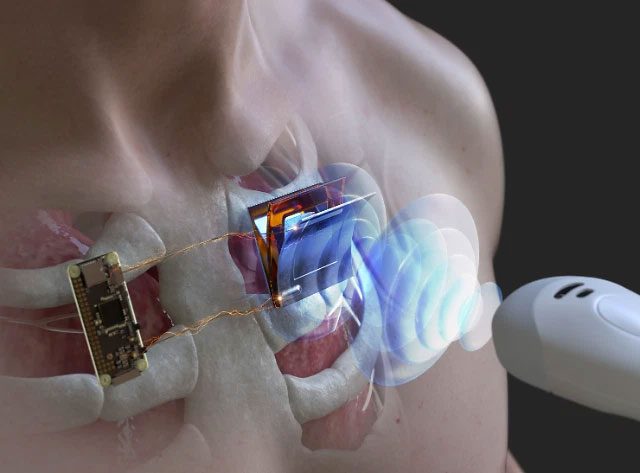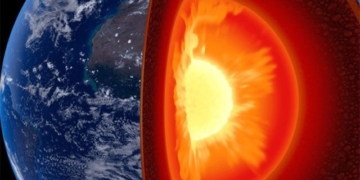South Korean researchers have successfully developed wireless charging technology using ultrasonic waves, which can be applied to charge pacemakers or chips that automatically deliver medication into the body. Thanks to ultrasonic charging technology, patients will no longer need to frequently remove devices from their bodies.

Illustration from the research team at KIST.
The new wireless charging technology is currently being applied to power smartphones, smartwatches, etc., due to its low efficiency and short charging distance.
Typically, a layer of copper generates an electromagnetic field that transfers energy to an induction coil within the device, which can convert the electromagnetic field into electric current. However, this wireless charging technology requires the two devices to be in contact.
A representative from the Korea Institute of Science and Technology (KIST) stated that the research team opted for ultrasonic waves instead of electromagnetic waves as the energy transfer system. They designed a specialized triboelectric device capable of transmitting ultrasonic waves to convert energy into electrical energy.
In underwater experiments, the KIST research team was able to transfer 8 megawatt-hours of energy to a device located 6 centimeters away from the power source. The device achieved an efficiency of 4%, sufficient to power approximately 200 LED lights or supply energy to sensors transmitting data via Bluetooth.
KIST experts noted that the energy conversion efficiency is very high, as the charging system did not generate excessive heat during testing. Additionally, this wireless charging technique could find its applications in charging implanted medical devices. Ultrasonic waves have been familiar to the medical field for hundreds of years, from internal organ imaging to observing fetal development.
“[The experiment] has shown that implanted devices can operate with power supplied by the new charging technology,” researcher Song Huyn-cheol stated at a recent press conference. The professor remarked that as efficiency and safety improve, this charging technique could be utilized in medicine and even in underwater exploration sensors.


















































